
Ryan Wallace’s paintings are shaggy collages, pieced together from canvas strips, screens, tiles, metallic tapes, and found objects. His new work, on view at Susan Inglett through October 15, features the odd shapes of the light refractions that appear on the walls. By tracing the luminescence, and turning the shapes into concrete objects, Wallace’s paintings take a well-aimed shot at capturing the ephemeral, forgotten moments of life though an aggressively anti-digital, messy, non-curated process. Here are excerpts from a recent interview with Peter Ibsen at Copenhagen Contemporary about Wallace’s influences, process, and the ideas surrounding his work.

Peter Ibsen: What influences you?
Ryan Wallace: Just the act of working in the studio propels all the exploration. It seems to keep opening up new avenues. I�m also surrounded by an incredible community of friends and artists who I want to create opportunities for and contribute to dialog with. As much noise as is out there now, there is also so much incredible art being made. I look at a lot of art and go to a lot of shows.
PI: Can you tell me more about the process in your works?
RW: For this show I began with photographs of light reflecting off of a tiled floor installation and the shapes that these reflections cast on the walls of the gallery [Wallace is a co-partner at Halsey McKay in East Hampton, NY]. I took these shapes and projected them onto sheets of marked, scuffed and painted canvas and fabric and cut them out with a blade. I moved these shapes and their corresponding negatives around on the studio floor, into compositions that both directly referenced, and extrapolated from the arrangements of the original photographs. I then seamed these shapes, along with part of the original tiles, and other debris from the studio into one surface and stretched them as paintings.
From there I worked back into them with enamel, oil and acrylic, sometimes cutting into, tearing apart, de-stretching, re-seaming and composing, until I arrived at what feel like complete paintings. It is all very call-and-response and intuitive maneuvering. The original floor installation has been reassembled, altered and installed as two walls in the gallery. This serves as a call to the genesis of the paintings and as a reinterpretation of the architectural foot print of the previous gallery, in the new space. Variations of this floor piece have been installed in San Francisco, Miami and Toronto, each time being augmented by those who tread on it, and according to the physical parameters of the space it fills.
PI: The idea/concept surrounding your work, can you tell us more?
RW: Surrounding is a good way to phrase it. I wouldn�t specifically describe my work as being �about� explicit concepts other than the act of making with my recent output being a cycle of continuously constructed, razed, rebuilt and re-flattened material. Ongoing themes that I explore in paintings and sculptures are confusing the perception of space, combining authored and accidental gestures, marking time, and how information is created, copied and presented. On some level I see this all as a loose metaphor for the self-obsessed curation of our daily lives and how we then present them in digital environments. I am just constantly looking inward and around the studio, altering and churning this material, �my stuff�, and formalizing it into �finished� works � which concludes with presentation in an exhibition setting and act as Luddite versions of an avatar or profile.
PI: What is most important to you regarding your work?
RW: That it is sui generis in nature and generous to the viewer. I work to make them especially engaging in person. I am always looking for inventive ways to use unexpected materials, or to use classical media in �wrong� ways. The work does not behave in real life as it appears in jpegs. I think the physical interaction with the works is crucial to make a case for creating paintings and objects today since we are bombarded with images on screens endlessly. I�m obsessed with art history and always keep in mind where what I�m working on may fall in this time line.
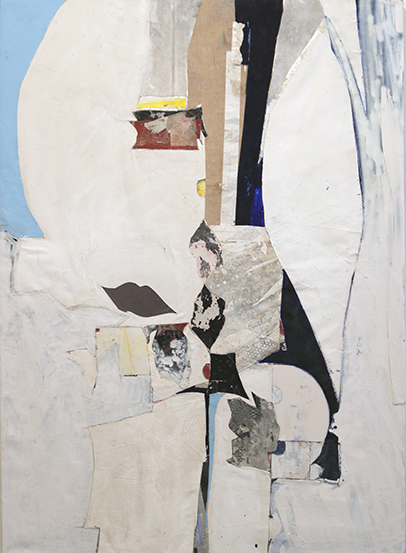
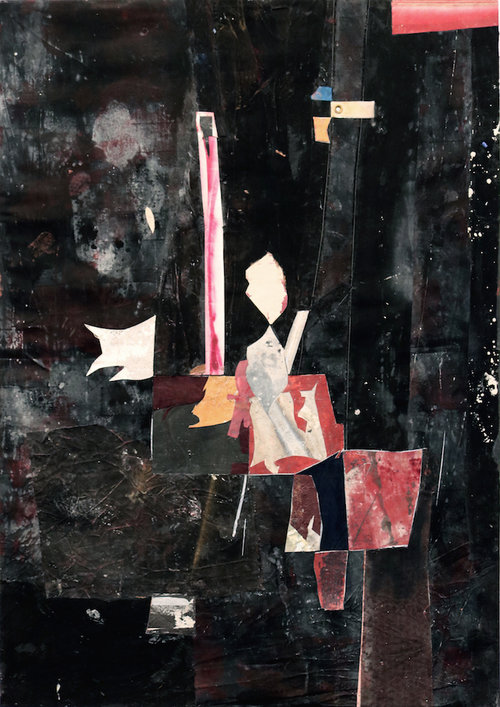
“Ryan Wallace: Surveyor,” Susan Inglett, Chelsea, New York, NY. Through October 15, 2015.
Related posts:
Interview: Sophia Flood in Gowanus
Objecthood: Joan Mir�s painted sculptures







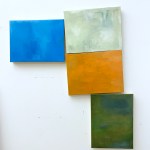
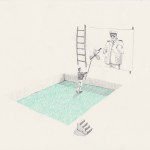
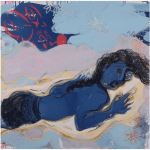





Thanks for sharing the interview with Ryan. And thanks to you Ryan for taking part in it. Peter Ibsen